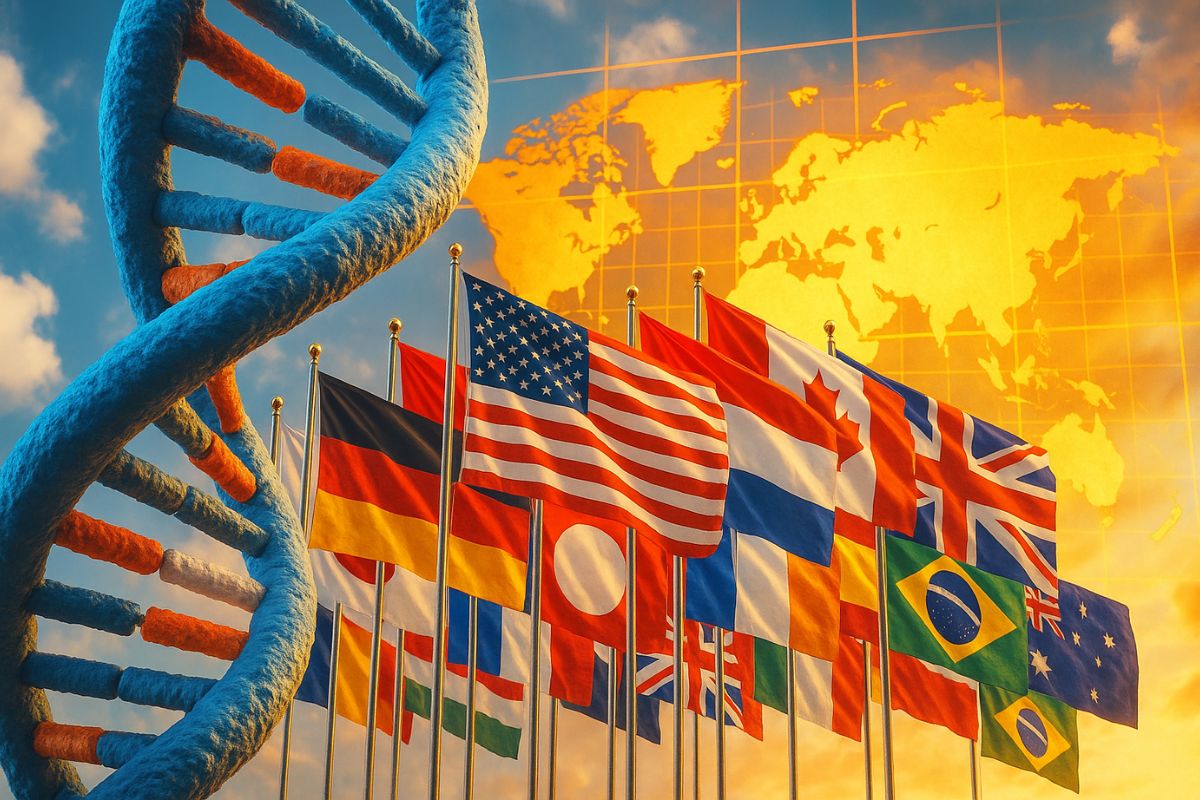A 13-year collaboration between 18 countries mapped the 3,2 billion base pairs of human DNA, creating the largest genetic database ever produced and ushering in the era of personalized medicine.
O Human Genome Project was an unprecedented milestone in the history of modern science. Between 1990 and 2003, more than 5.000 scientists from 18 countries joined forces on a single mission: to decipher the 3,2 billion base pairs of human DNA. The result was the creation of the first complete genome map, an achievement that transformed biotechnology, pharmacology, and personalized medicine on a global scale.
In addition to its scientific value, the project showed that a 13-year megaproject can have profound economic and social impact even without producing a physical structure. Instead of roads or power plants, it delivered data, and that data became the infrastructure essential element of a new biomedical era.
The beginning of a global endeavor
Officially launched in 1990 by the United States Department of Energy, the Human Genome Project started with a forecast of 15 years duration and budget of US $ 50 billion, reduced throughout the process to about US $ 3 billion.
— ARTICLE CONTINUES BELOW —
His goal was as simple as it was monumental: identify all human genes e determine the exact sequence of nitrogenous bases that form DNA.
The execution was distributed between research centers in 18 countries, coordinating partial sequencing that would later be integrated.
In addition to genetic mapping, the project included the creation of public databases e bioinformatics tools, making information accessible to the global scientific community.
This collaborative effort not only accelerated the development of new sequencing techniques, but also solidified an open science model, in which data sharing became an innovation asset.
The molecular engineering of the human code
O human genome contains approximately 3,2 billion nucleotides, grouped into 23 pairs of chromosomes.
The average size of genes is about 3.000 bases, although there are significant variations, the largest gene identified, dystrophin, has 2,4 million base pairs.
Scientists have discovered that only 2% of the genome encode proteins, and that 99,9% of the sequence is identical among all humans. These similarities reveal the degree of biological unity of the species, while residual differences explain individual variations and genetic predispositions.
Among the most important discoveries are the single base point variations (SNPs), which helped map the origin of complex diseases such as diabetes, cancer and cardiovascular disorders.
This information paved the way for the development of genetic predisposition tests and personalized therapies a true turning point in the history of preventive medicine.
The scientific and ethical impact of the project
More than a technical advance, the Human Genome Project redefined the boundaries between biology, ethics and science policy.
From the beginning, the international consortium included an axis dedicated to ethical, legal and social implications (ELSI), debating topics such as genetic privacy, discrimination and commercial use of biological information.
A first public version of the human genome, published in 2001 by magazines Science e Nature, marked a watershed.
In 2003, the official conclusion of the project consolidated a knowledge base that would be used by thousands of laboratories worldwide, boosting research in oncology, agricultural biotechnology and pharmacogenomics.
Today, the economic and intellectual impact of this 13-year collaboration manifests itself in entire new industries from personalized medicine to portable sequencing, proving that information can be humanity’s most powerful scientific asset.
A legacy that continues to evolve
Two decades after its completion, the Human Genome Project remains the foundation of nearly all modern biomolecular research.
Open access to original data has fueled innovations ranging from gene editing with CRISPR-Cas9 to the genetic mapping of entire populations.
International collaboration has also inspired other scientific megaprojects, such as the Brain Initiative and Cancer Genome Atlas, reinforcing the model of global cooperation around shared data.
More than deciphering DNA, this 13-year collaboration showed that the true engine of science is cooperation between countries and generations, transforming information in biological revolution.
Do you believe that the next major international scientific collaboration will be able to surpass the impact of the Human Genome Project? Leave your opinion in the comments; we want to know how you see the future of global research.
